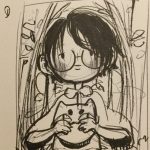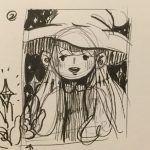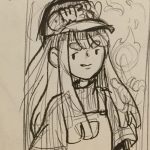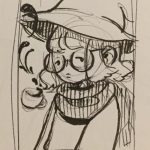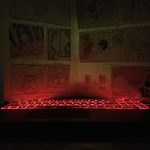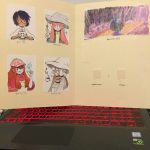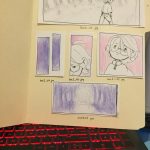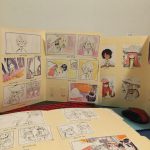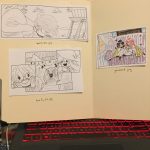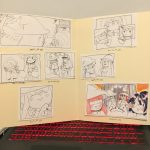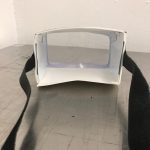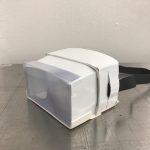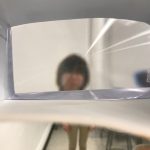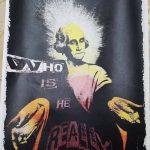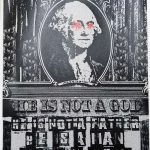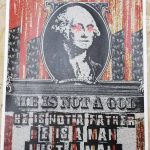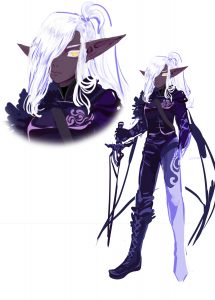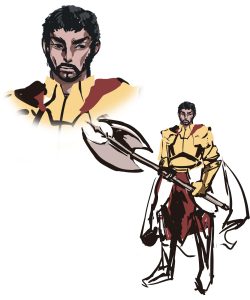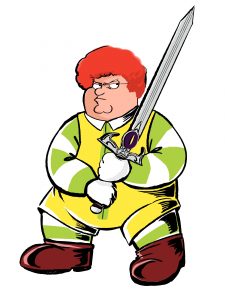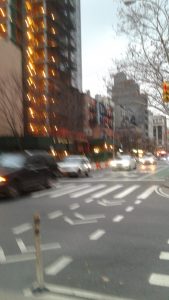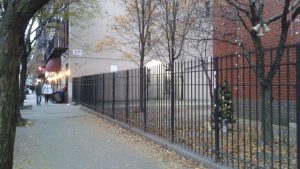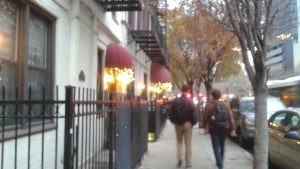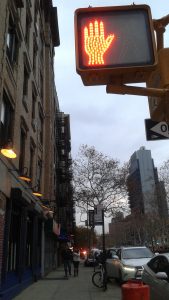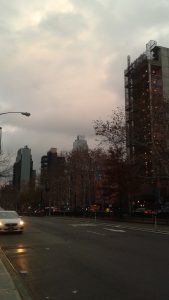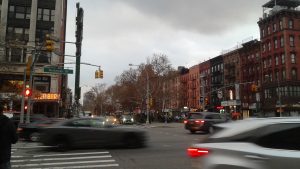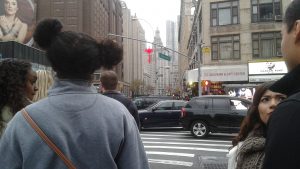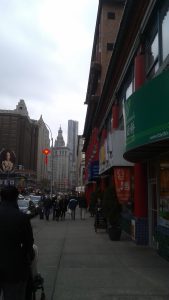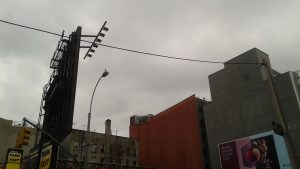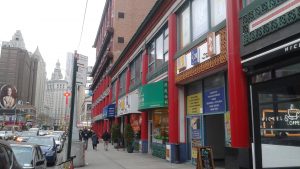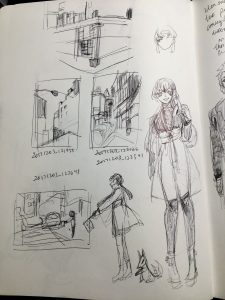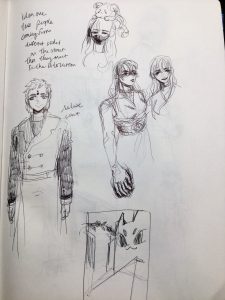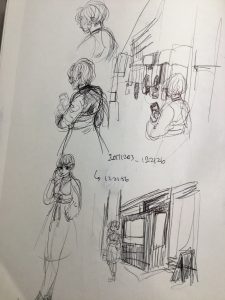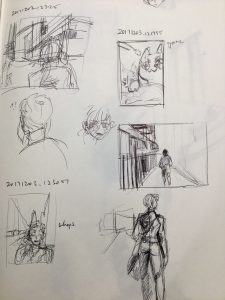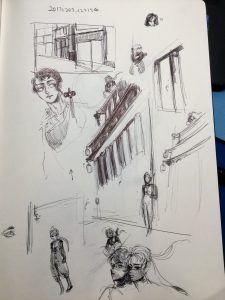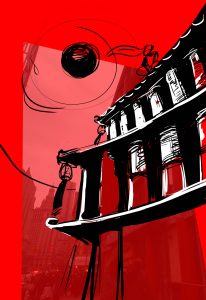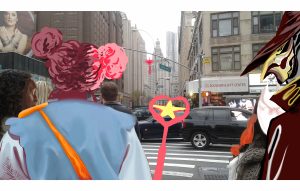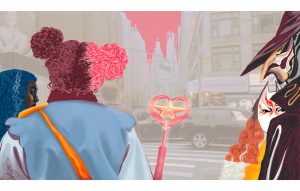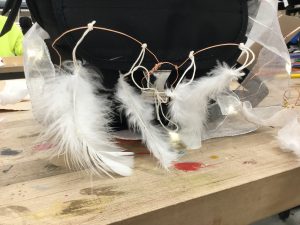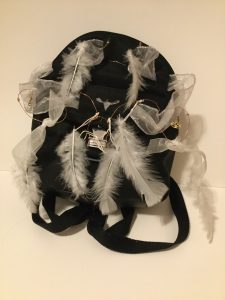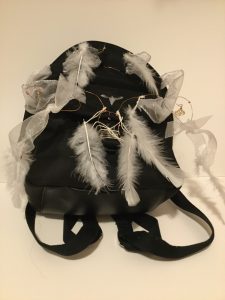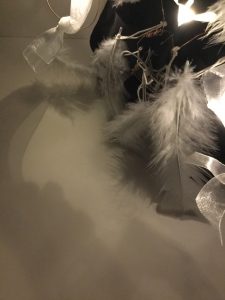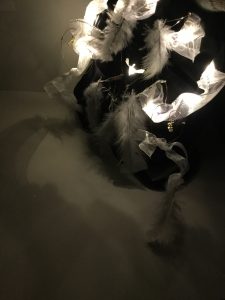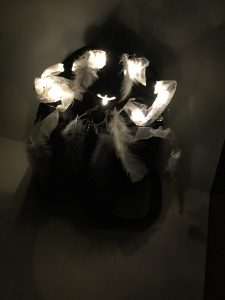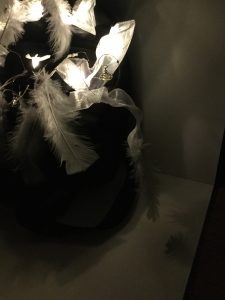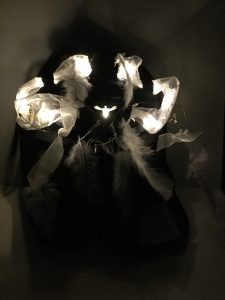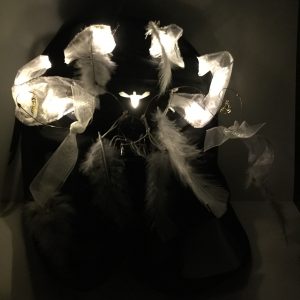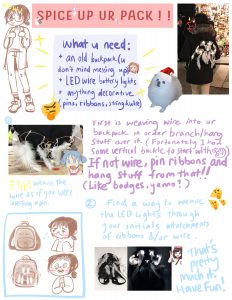From the early ages of drying mashed pulp of something to make paper to now, using abundances of trees to make the accessible bundles of paper we have today, paper has definitely come a long way. In addition to the huge focus on recycling and reusing old paper to make new paper. In many developed countries, paper is something taken for granted, even more so in the age of recycling where people are in the mindset that we can still use more paper because it’s being reused. Maybe this isn’t the case though with the advent of technology, there seems to be less reason to use paper. However, there are strong believers of the traditional way of 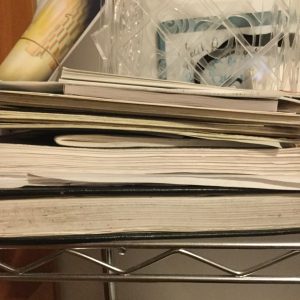 learning, which is writing directly on a piece of paper that’s why there hasn’t been a full push to stop using paper and have everything on tablets or on the internet. That kind of world seems unbelievable now but may come one day. Perhaps it’ll come after much persuasion or when we finally realize chopping down trees isn’t cutting it. Either way, switching to a technology-based society would also be difficult because the mass production of it would also be destructive. Will there be any way to fully stop pollution? It’s something we all strive to fix every day, but even simply having the drive to save our planet isn’t enough which is why we need to plan with everything in consideration.
learning, which is writing directly on a piece of paper that’s why there hasn’t been a full push to stop using paper and have everything on tablets or on the internet. That kind of world seems unbelievable now but may come one day. Perhaps it’ll come after much persuasion or when we finally realize chopping down trees isn’t cutting it. Either way, switching to a technology-based society would also be difficult because the mass production of it would also be destructive. Will there be any way to fully stop pollution? It’s something we all strive to fix every day, but even simply having the drive to save our planet isn’t enough which is why we need to plan with everything in consideration.
Object Impressionism Journal – Entry 6
What’s the function of a cup? We use it to easily fill it up with something to drink at the moment or maybe a few minutes after. Rather than having a function of accessibility, does it also have a function of sophistication? For example, fancy teacup sets that cost almost a hundred fifty dollars. That doesn’t seem like it’d be in an average person’s arsenal. Although I’m mostly talking about ceramic cups that can be used over and over again, there are plastic and 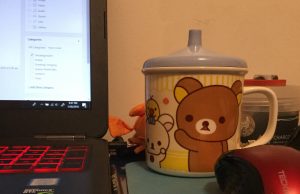 styrofoam cups that are used once and thrown out. They may not be intended for the purpose of being used multiple times through, but in some cases, these plastic and styrofoam cups may be all a person has. On the other hand, we have these vacuum flasks that store liquids at its intended temperature for quite awhile. The ceramic mug sitting in your self may seem like a very common household item, but it’s not something we should take for granted. We should be grateful these containers holding our favorite drinks are in existence because, without them, we’d be cupping our hands or leaving the water running from sink to brush our teeth.
styrofoam cups that are used once and thrown out. They may not be intended for the purpose of being used multiple times through, but in some cases, these plastic and styrofoam cups may be all a person has. On the other hand, we have these vacuum flasks that store liquids at its intended temperature for quite awhile. The ceramic mug sitting in your self may seem like a very common household item, but it’s not something we should take for granted. We should be grateful these containers holding our favorite drinks are in existence because, without them, we’d be cupping our hands or leaving the water running from sink to brush our teeth.
Object Impressionism Journal – Entry 5
In class today, our teacher asked us to describe this stone figure, which I thought of it to be an angel judging from the human-shaped figure from the front and its two long oval shapes attached on its back. We described what we saw and wrote down some questions – at least that’s what we were supposed to do I kind of just word vomited. After the duration of observing, he revealed to us that it was a prototype given by his friend. They were merging cement and rubber pieces (this was what created the glittering effect of the figure) and ideally the product would be able to rebound if thrown on the ground. As we passed this object around, however, this product didn’t feel the w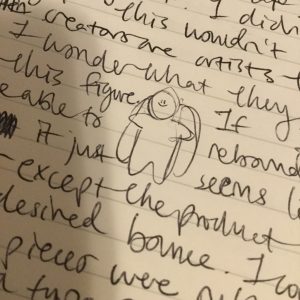 axiness of rubber, so I hesitant in the idea of it bouncing around. The fact that it was a prototype means that his friend experimented with the mixtures or materials of whatever he had to create the idea he had in mind. They might have gone to through several trials to gratify their plans or maybe they’re still going on with their idea. In any case, this shows the importance of experimentation of even the most unlikely things. They may be unimportant to the world and you may be just experimenting out of curiosity, but I believe having the drive to even go through with something especially insignificant actually makes it more significant.
axiness of rubber, so I hesitant in the idea of it bouncing around. The fact that it was a prototype means that his friend experimented with the mixtures or materials of whatever he had to create the idea he had in mind. They might have gone to through several trials to gratify their plans or maybe they’re still going on with their idea. In any case, this shows the importance of experimentation of even the most unlikely things. They may be unimportant to the world and you may be just experimenting out of curiosity, but I believe having the drive to even go through with something especially insignificant actually makes it more significant.
Object Impressionism Journal – Entry 4
I bought my iPad to the class that day because I thought I’d be able to use it for entertainment at some point (maybe break) and also because instead of bringing my laptop, I’d bring my iPad because it was easier to carry. Tablets are practically a mini laptop anyways so there’s virtually no difference. I could easily access the internet with one press – the same goes for my phone. Technology’s presence is so strong in our daily lives that without it we’d feel a great sense of loss. We wouldn’t have the quick access to knowledge that’s predominant currently or the power to send messages to people around the world in one second. Technology has made our daily lives easier, but it also comes 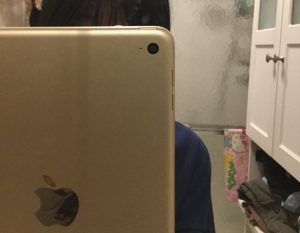 at the cost. This cost may or may not affect everyone, but personally, I find it hard to escape from the web, being wrapped around its threads – as in, I can’t shut down my laptop. I could spend hours and hours on my laptop doing nothing, but watch videos. My friend shares a similar situation scrolling down her Instagram feed. Still, the benefits outweigh the disadvantages and I don’t view this problem as technology’s fault but more so of mine (in that I can’t resist the desire to search through Youtube for hours without rest). But I know there are some people who have an unhealthy relationship with the web, using it as a platform to be someone else as on the internet, no one knows if you’re a dog. I’d also like to touch upon the waste technology produces especially in the mass production of Apple products. But that’s where innovative designers step in, to make technology more efficient and the future brighter.
at the cost. This cost may or may not affect everyone, but personally, I find it hard to escape from the web, being wrapped around its threads – as in, I can’t shut down my laptop. I could spend hours and hours on my laptop doing nothing, but watch videos. My friend shares a similar situation scrolling down her Instagram feed. Still, the benefits outweigh the disadvantages and I don’t view this problem as technology’s fault but more so of mine (in that I can’t resist the desire to search through Youtube for hours without rest). But I know there are some people who have an unhealthy relationship with the web, using it as a platform to be someone else as on the internet, no one knows if you’re a dog. I’d also like to touch upon the waste technology produces especially in the mass production of Apple products. But that’s where innovative designers step in, to make technology more efficient and the future brighter.
Object Impressionism Journal – Entry 3
I remember having a heated conversation with Maithili about transportation in NY when we were creating our service/app. We talked about the whole mess of a map for the MTA subway and all the good ‘ol delays and reroutes on the trains. Even though we have so much technological innovation going on, there’s still no significant change to the types of transportation here. Change is hard and it’ll take time to work and be accustomed to, but as long as it’s for the better, for example, like something self-sustainable so we don’t have to pay for transportation. I mean we already have electric-charged buses so maybe we can with trains too? I’m not really sure how the MTA works, but if it were a free service (or maybe you pay for an initial fee to get your all-in-one MTA card for your personal use) would it become a government paid job? I wonder if this change would increase the number of passengers though and if the platforms and vehicle being used would even be big enough for the new amount. I know it’s already hard to implement changes (I’m looking at you MTA with all your delays and reroutes), but maybe we could spread out and try our ideas in a country who would need better transportation. Ideally, it would be a win-win situation because we’d be able to test out ideas while helping the people who live there. Of course, the drastically different climate would affect the type of transportation as well so this wouldn’t be a direct solution for us as well.
Object Impressionism Journal – Entry 2
Yesterday was my first Games 101 class and my teacher opened up by talking about the transformation of games throughout different time periods. From chess and other intricate and sophisticated games to board games like Monopoly for heaps of fun to the modern technological age of Virtual Reality. There can be all kinds of games. Games for entertainment or for a storytelling experience or even for education. My reason for wanting to go into game design is because I want to express myself through
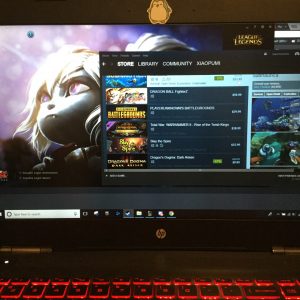
storytelling. I never really thought of games as a way to express myself until my Games 101 teacher said he believed it was so on the first day of class. Especially because through storytelling, something formed from my experiences. There are many people who believe games to be a waste of time, which is why the games you play should be worth it. So towards game makers as artists, how can they make what they make with purpose? On a global scale, virtual reality could have an impact on education. Games could be a simulation for what they want to practice or learn. However, if its a simulation, it seems to be more of something active rather than academic, which isn’t necessarily a bad thing,
Object Impressionism Journal – Entry 1
That day when I was commuting home, there was a person next to me who greatly smelled like marijuana and it was really nauseating for me. I grew up not liking the smell of cigarettes because I understood the consequences of it (my brother and I would always run when we smelled that smoke). That’s why I had always begged my dad to stop smoking when I saw him hanging out with his friends. That same friend now still smokes when he has his own child, which is unfortunate and I understand these addictions and habits are hard to break and that rehab is pretty useless in some cases, but still I wish tobacco and 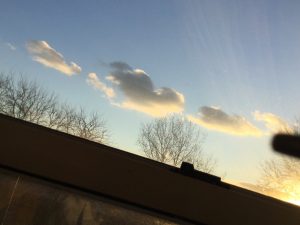 marijuana wasn’t something people smoked. I wish it wasn’t something easy to become addicted to. I guess that’s where legalizing and regulation comes in.
marijuana wasn’t something people smoked. I wish it wasn’t something easy to become addicted to. I guess that’s where legalizing and regulation comes in.
(the clouds are supposed to resemble smoke)
People say that marijuana will only become accessible when legalized, but I imagine that there will be more laws in place to prevent easy access to unwarranted addictions. However, after the regulation is placed, what happens to the people who need their fix and are outright refused for it. Should they be forced into rehab or just left to suffer? Maybe before setting these laws, we should look into why these addictions happen, perhaps because of poverty or simply mixed into a group of people who smoke and try to prevent these situations from happening. It’s a very complicated situation since it involves so many aspects if regulation were to be implemented, which is why it shouldn’t be enforced without any thought behind the whole process.
Final LP Reflection post for Seminar/Studio Avatar
For the first project, the Personal Flag, because I wanted to show that games had a huge impact on my life and that it’s something I want to pursue, I made my project interact. The folders replicate folders on a computer, clicking through an adventure and exploring different paths.
For the second project, the Body Extension, my partner and I chose to do something with vision. The design of it looks similar to an Oculus Rift (please don’t sue me), which was something I realized while building my piece. When worn, the wearer can see everything in a more magnified, but distorted light. We connected this to the fact that the more you search the truth, especially in this day and age with fake news even from “authorities”, the blurrier it gets. So what is the truth exactly?
For the third project, the Site-Specific Installation in Washington Square Park, The Five Footer’s (our collective name), manifesto was to reveal the truth of George Washington. We idolized him throughout history almost as a god, ignoring the inhumane things he did and that fact that, he too, is just a human. The medium we used for this project was flyers, stickers, and badges, attempting to emulate other protesters using this easy method as an accessible way of spreading information and awareness.
The fourth project, the Conceptual Avatar Project, I chose to create an origin story for an anti-hero, a vigilante basically. Just like many other animated shorts, I wanted to illustrate a narrated story and make it somewhat animated at least. I just ended up with an abstract music video however.
My Ambition and My Mission
Throughout the semester in the studio, I worked with mostly photoshop and just illustrating my ideas, however, the one time this was not the case was the project on body extensions, which was required that we build something. I was not familiar with arts and crafts, but I took my time meticulously calculating measurements so the ocular headset’s open rectangular prism would be built accurately. I was not familiar with what sorts of materials I wished to build my body extension with and although I had first sketched out plans to craft with wood (the only thing I knew how to build with at that point in time), I ended up using vinyl, foam sheets, and magnifying sheets – many sheets, and I am glad I did so because of how clean it looked. I was going for a minimalistic look and I figured a block of wood painted white wouldn’t fit that description. As for After Effects and Photoshop, I want to keep improving myself in those mediums and work hard towards my goal of being a game designer.
Sketches from my first DnD game with my friends. I had interest in this game for a long time now because of its live storytelling.
The one concept that stuck with me the most from seminar stems from Nelson Goodman’s text, Ways of Worldmaking: Fact from Fiction, and Elinor Ochs and Lisa Capps’ text, Narrating the Self. I was able to connect the two when researching the relationship between cultural trauma and cultural identity and, consequently, its effects. In the case in which a horrendous event occurs to the point a collective’s cultural identity is also drastically affected, is when this happening is labeled cultural trauma. What comes from this is not only devastation and destruction, but creative work such as personal narratives – work is created from their real experiences. When they take shape, they form their own meanings and concepts, bringing fact from fiction.
The research I gathered from the topic of the effects of cultural trauma on a collectives identity surrounds major, horrendous man-made events, such as the Holocaust and slavery. However, I also ran into natural disasters, which was something I had not thought of since I was so focused on infamous iconic events. The text, Ten Years after Katrina: Critical Perspectives of the Storm’s Effect on American Culture and Identity, focused not on the destruction this event caused on the Gulf Residents and America as a whole, but the creative output it caused in order to understand how our stories reflect and produce cultural identity. After learning that this event not only affects the collective but the lives surrounding that collective as well, I researched on individuals. For example, the Japanese living America in World War II were viewed as “enemy aliens” after the bombing of pearl harbor. I am sure that this collective harbored conflictive feelings seeing their home country being bombed as well. An artist, Yasuo Kuniyoshi, at that time was forced to confront questions of his loyalty, assimilation and national and racial identity.
For someone going into game design, the narration is also something imperative to storytelling games. My character’s backstory goes through this trauma of having her parents killed and then herself being killed as well. The fact that she was reborn and awoke with the power to manipulate her own blood is something I wanted to explore as I built her character. How does this trauma affect her individuality? Becoming reborn seems to be representative of having a double personality, “awakening” her other side. Has that other side always been there? Waiting to manifest? Or could it just be a defense mechanism for herself to avoid the truth since being hot-blooded with hatred and anger is easier to handle than confronting the truth herself? Instead of focusing on cultural trauma and a collective, I want to explore trauma and its effects on individuality.
Something I was surprised to discover was how much popularity our George Washington stickers and badges had. Our collective had based on the idea of handing out flyers and badges to send a message, but we did not predict the prospect of the stickers being collectibles. I had an epiphany when I remembered a while back in high school, there was a person handing out stickers of Black lives matter, which I then spotted pretty much everywhere in school (and on it). Many other protests also use this method of sending messages through an item that sticks onto your stuff. I mean it is a sticker, what else would you do with it (besides throwing it out)? I think for many of the projects, excluding the body extension, I would stare at the prompt and think of a way to own it and work on photoshop or illustrate it, two methods I am most passionate about. Another point would be to take a step back and maybe show your progress to someone in order to have a fresh perspective because for the conceptual avatar project, I was narrating everything in my head, and the flaw in doing so was that nobody else would understand but me. They would at least view it as something abstract, which was part of my intention at certain scenes, but not for the entirety of the animated short.
Michelle currently studies at Parsons school of design and commutes from Queens every day because of costly dorming expenses. Of course, they each have their own advantages and disadvantages, but, to sum it all up, Michelle believes commuting is annoying and wishes she could dorm. In her free time, she dreams of fantasy worlds and that world’s individual characters. She entered Parsons wanting to pursue game design because of her love and admiration for storytelling games. She imagines working with a team and going through rough and rigorous days to complete projects, an experience that already sounds familiar. But creating a game for the enjoyment of others and herself is worth it.
Here’s my mind map created from my experiences in this semester:
A List of things imperative to the process of creation:
- Why is this important? To you? To the world?
- Before getting a picture of what your creation will look like, what is it even about?
- From that what kind of materials can you use to portray that?
- mind maps, sketches, and actual drafts (not my inadequate ones for Bridge 4;_;)
Also since there’s a due date for these projects, you have to manage your time well. As shown in my mind map, I’m pretty much a mess 99% of the time – the 1% is me telling myself I should do something productive. What I wanted to get into was that I was able to flesh out all my ideas I wanted to do for Bridge 4, but that was also just me messing up my origin story into some weird abstract music video. I wanted to achieve something like:
but I made something like:
– but at least Battleborn’s animated intro had a clear story to it.
So in terms of narration, specifically a narrative animation, I needed to flesh out my ideas of the universe I built so that other people could understand it. For a quite a long time now I’ve been at a deadlock, just drawing in my sketchbook and not pursuing bigger projects. So this semester was really great for me, despite being difficult, to be exposed to new things.
Drawing/ Imaging: Final Project: Signs and Symbols, the language of visual culture
To begin the assignment, we were required to read chapters from John Berger’s Ways of Seeing. After gaining inspiration on how what we perceive greatly impacts our appreciation of certain images, we set off to explore two different locations in New York.
I chose the locations around Allen Street and Centre Street – both familiar places since I’ve lived in New York all my life.
Some featured pictures:
Around Allen Street
Around Centre Street
At first, I planned on narrating a story with the pictures I had with two characters looking for each other. This was influenced by a conversation in Centre street where I overheard two people trying to find each other on the phone.
I scratched that idea and decided to focus on the oriental looking building in Centre Street, but then moved onto other ideas when I made mockups.
This was the oriental building idea I had. The building was also a bank so I was going to draw a ninja on top of the building.
This was a wonky merge of pictures I took in Allen Street. There’s a lot of hipster places in that area and, in contrast, some old apartments, an old laundromat, and an immigrant taxing place. Despite that contrast, I wanted to mix this hotpot of disparency because that made up Allen Street.
The idea I went with was based on one of the featured pictures I posted for Centre Street.
“We are our own protagonists of our stories. However, these stories overlap, creating bonds that’ll last for an eternity.”
In New York, many of us are in our little bubble and even I’m guilty of that. We’re all so unique and different and despite our differences, friendships are still possible.
In this picture, I drew fantasy characters in order to represent that idea of uniqueness. I wanted their color palettes to still share similarities because they aren’t opposing enemies, but a squad. I believe that unification can battle anything. Hurray for the power of friendship!
Project 3: Public Communication – Enhancement
The Spirit of New York City
My goal for this project is to enhance usually dull & boring backpacks I see carried by people in the subway. I used mostly white, gold and copper to portray a stark contrast between the enhancements and the black backpack while simultaneously emulating the nightlife of New York City. The feather and ribbons are light because they are meant to blow along with the wind, evoking a sense of freedom – something New York City holds intimately at night. You would stand out with this enhancement yet you would also blend into New York City’s environment – like a walking lamppost, a very festive one.
My “recipe” to making the project, but in addition, making your own custom pack!
I wanted it to have a fun vibe because this is something anyone could do and have fun with. I wore mine around the holiday market in Union Square!
